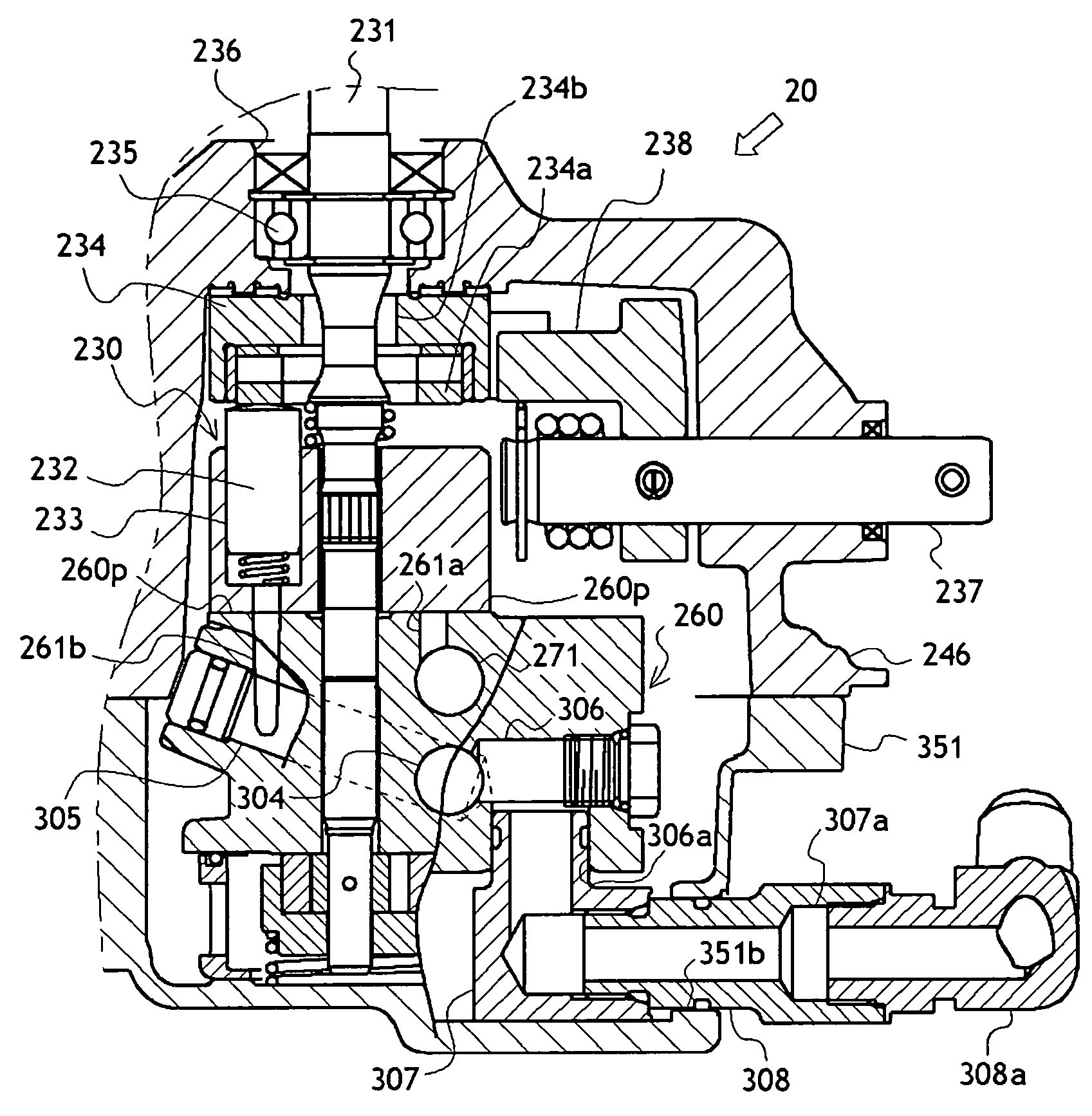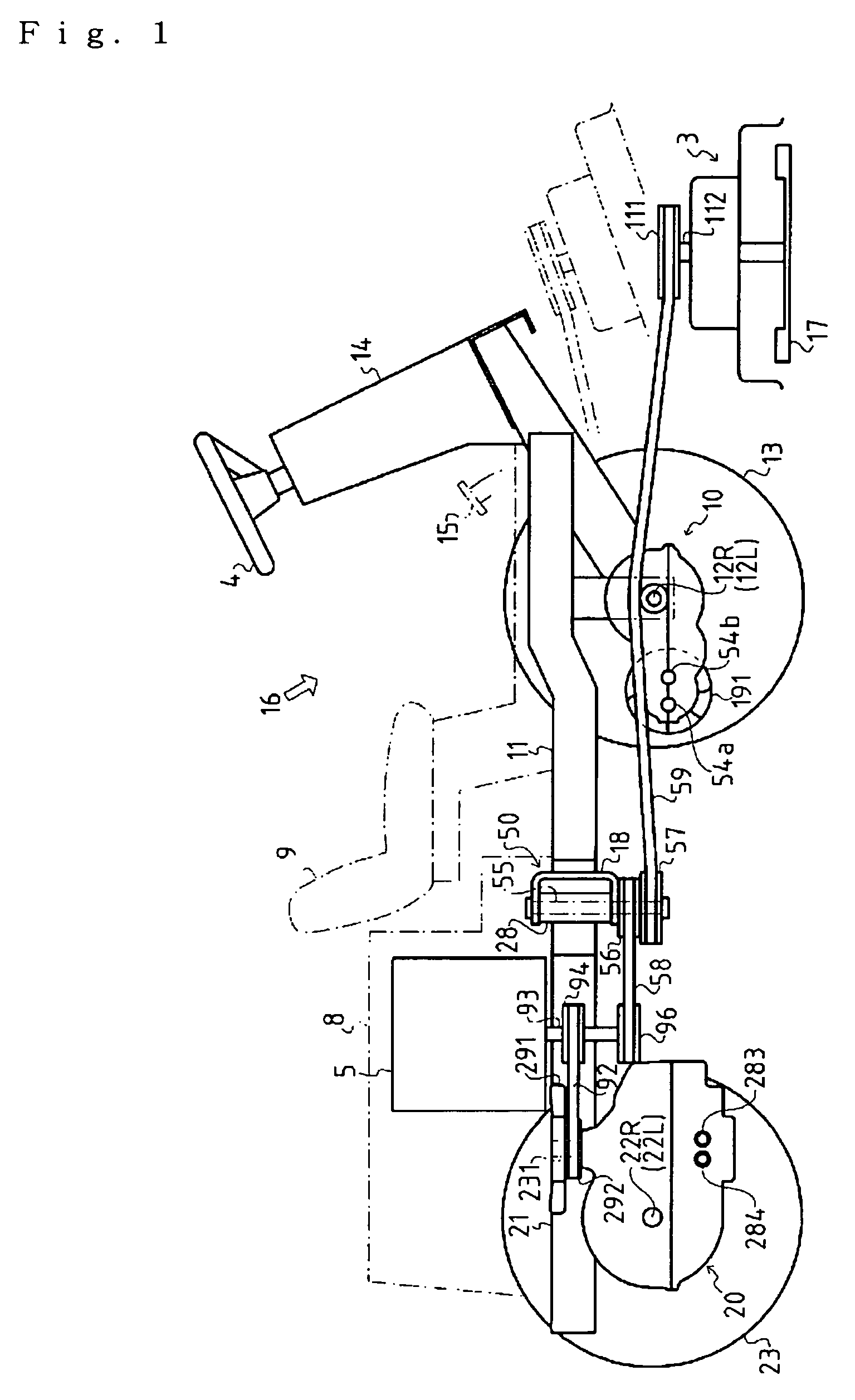Hydraulic transaxle apparatus for a four-wheel-drive vehicle and four-wheel-drive vehicle using the apparatus
a transaxle and apparatus technology, applied in the direction of electric devices, couplings, fluid couplings, etc., can solve the problems of lack of stability and roadability when working on slopes, vehicle is difficult to bail out, and the power take-off shaft for driving the working device cannot be used as the front wheel drive sha
- Summary
- Abstract
- Description
- Claims
- Application Information
AI Technical Summary
Benefits of technology
Problems solved by technology
Method used
Image
Examples
first embodiment
[0119]As mentioned above, in the hydraulic circuit structure hydraulic motors 40 and 240, which are arranged in front and rear transaxle apparatuses 10 and 20, respectively, are fluidly connected in series to hydraulic pump 230. This in series connection form is suitable for an articulated vehicle in which coupling part 50 serves as a turning center of the vehicle and is arranged at an equidistant position from both the front and rear axles of the vehicle.
[0120]In this way, in front transaxle apparatus 10 and rear transaxle apparatus 20 are driven front wheel axles 12L and 12R and rear wheel axles 22L and 22R, respectively, thereby realizing a four-wheel-drive vehicle which is excellent in both steering performance and running performance over bad ground conditions.
[0121]Especially, a four-wheel-drive working vehicle provided with the in series hydraulic connection has the capability of freeing its running wheels from mud. For example, even if the vehicle travels in a swamp and a f...
second embodiment
[0140]Description will now be given of a hydraulic circuit structure wherein hydraulic motor 40 in front transaxle apparatus 10 and hydraulic motor 240 in rear transaxle apparatus 20 are fluidly connected in parallel to hydraulic pump 230.
[0141]As shown in FIG. 20, in a horizontal portion of a center section 360 are bored a first kidney port 361a and a second kidney port 361b opposite to each other. These kidney ports 361a and 361b are open at a position where openings of the cylinder bores of cylinder block 233 pass.
[0142]On the other hand, as shown in FIG. 23, in the vertical portion of the center section 360 are bored a first kidney port 362a and a second kidney port 362b opposite to each other. These kidney ports 362a and 362b are open at a position where openings of the cylinder bores of cylinder block 243 pass.
[0143]As shown in FIGS. 21, 22, and 24, in the center section are bored an upper first fluid passage 371 and a lower second fluid passage 372 parallel to each other in ...
PUM
 Login to View More
Login to View More Abstract
Description
Claims
Application Information
 Login to View More
Login to View More - R&D
- Intellectual Property
- Life Sciences
- Materials
- Tech Scout
- Unparalleled Data Quality
- Higher Quality Content
- 60% Fewer Hallucinations
Browse by: Latest US Patents, China's latest patents, Technical Efficacy Thesaurus, Application Domain, Technology Topic, Popular Technical Reports.
© 2025 PatSnap. All rights reserved.Legal|Privacy policy|Modern Slavery Act Transparency Statement|Sitemap|About US| Contact US: help@patsnap.com



